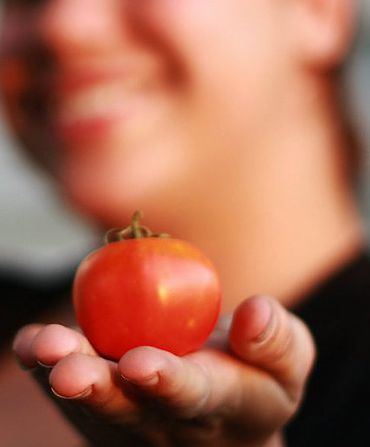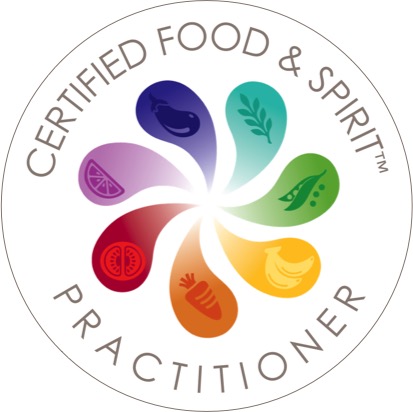7 Ways Plastics Damage the Body, and What We Can Rid our Bodies of Overexposure
This month, I have decided to focus on a health topic that is related to all of our health and wellness goals - toxin exposure. Specifically the exposure of toxins from plastics in our foods and in our environment.
Adipose tissue - the fat we carry on our bodies - is distinguished as two types: WAT, white adipose tissue, and BAT, brown adipose tissue. The excess white fat we store on our bodies acts as a hormone producing, toxin storing organ. It really is the evil tri-fecta of health.
Your body’s ability to process toxins through your system is a large factor in your ability to lose weight and to reach a healthy goal weight. Struggling with this issue activates backup strategies for dealing with toxic overload, which include expanding the number of fat cells and stuffing them with toxins as well as fat. This means weight gain and storage of toxins!
This is likely done to get the toxic trash out of your circulation and away from key organs. It causes easy weight gain and complicates weight loss because your body does not easily give up the toxic fat it has stored. We cannot lose weight until we are free of toxins, as the body is hard pressed to release the toxin containing fat cells, and will not do so in an inflamed or aggravated/toxin overloaded system.
This week's article is about the 7 most common ways plastics damage our bodies, and ways to detox from a clinical point of view, and from a holistic point of view. Every single person (and animal) you know has been overexposed to plastics and plasticizers that are creating a whole host of health issues. The great news is that we can help mitigate it and be more mindful of the presence of plastics!
Plastics (phthalates) are now considered the number one pollutant in the human body.
Plastics make products flexible and durable, and these chemicals are also in items you would not even think that they would be, such as pesticides, detergents, cosmetics, medications, even your shampoo.
Plastics are found everywhere so it is difficult to completely avoid them. You can live in the most pristine place on planet earth and still find animals polluted with plastics.
It is an interesting fact that plasticizers are over 10,000 to 1,000,000 times higher in our bodies than any other toxins that have been found in EPA studies. Unfortunately once in the body, these plastics do enormous damage.
What does all of this exposure to plastic mean for our health and well being?
7 Ways Plastics Damage the BodyRonald Grisanti D.C., D.A.B.C.O., D.A.C.B.N., M.S.Reprinted with permission from the Functional Medicine University
1: Phthalates damage the chemistry of fatty acids most importantly, the fatty acid DHA (docosahexaenoic acid). This is the fundamental chemistry necessary for making every cell lining or membrane. These fatty acids are the foundation for brain health including memory and recall.
2: Phthalates can create a zinc deficiency which will compromise the metabolism of vitamins A and B-6. In turn this could lead to conditions such as indigestion, depression, heart disease, cancer, diabetes, and accelerated aging.
As a quick side note - the combination of low zinc and low DHA can lead to chronic inflammation. Medical literature has clearly identified chronic inflammation as one of the most common underlying pathologies of most diseases leading to auto-immune diseases (rheumatoid arthritis, MS) to cancer and heart disease.
3: Phthalates has been found to be responsible for damaging the pancreas leading to diabetes, insulin resistance and metabolic syndrome X.
4: Phthalates has been found to lower sulfation. This means that you are no longer able to effectively detoxify like you should. This in turn can lead to a whole host of health challenges.
5: Phthalates damage hormone function, especially thyroid and testosterone.
6: Phthalates can poison the peroxisomes needed for the control of the chemistry of cholesterol. They can cause high cholesterol while at the same time keep cholesterol from forming the “happy hormones” (neurotransmitters) of the brain.
7: Phthalates can damage the body's ability to make catalase. Catalase is absolutely essential for devouring up the hydrogen peroxide that cancer cells make to allow them to metastasize or wildly spread throughout the body. Lack of catalase is a reason why many cancers briefly seem to be in remission after treatments, only to resurface months or years later with lethal consequences.
It is quite clear that overexposure to plasticizers and plastics in general are no good for our health long term; however do you know all of the sources you are coming into contact with plastics?
Where are we getting exposure to plastic outside of the obvious containers we have sitting in our cupboards and inside our refrigerators?
Unfortunately, our first line of immunity - our skin - is also the first line of exposure to chemicals. According to Dr. Grisanti, exposure to plasticizers can come from skin absorption of cosmetics, body lotions, hair gels, shampoos, and deodorants.
You can ingest them from water that has traveled through PVC (water) pipes, as well from detergents and foods.
We also can inhale them from airborne adhesives and glues, building materials, school/business supplies, furnishings, auto interiors, solvents, plastics, lubricants, insect repellents, vinyl flooring, carpet tiles, vinyl wallpaper, body toiletries, artificial leather, adhesives, dyes, and toys.
Don't forget that plastics coat every wire in the electrical systems of our homes, offices, appliances and computers. As the wires heat, the plastic coating out-gases into the air.
Plastics are everywhere and, to be quite honest, they are difficult to avoid. The best most people can do is to be certain they are doing everything they can to effectively and efficiently eliminate any build-up of plastics in the body.
From a clinical stand-point, according to Dr. Grisanti we need to first identify the accumulation level you have in your system. For some people they are fast metabolizers and quickly eliminate any exposure to plastics or for that matter most environmental toxins.
On the other hand, there are many people who have a poorly functioning detoxification system and will unfortunately accumulate plastics as well as other environmental toxins.
The best way to determine your exact level of accumulation or toxic burden is to get tested. The recommended lab test is called Phthalates & Parabens Profile (www.metametrix.com)

Phthalates & Parabens Profile
|  |
How Do We Get Rid of Them?
Dr. Grisanti prescribes a 3 step prototcol for detoxing from plastic overexposure.
1: Since they are detoxified through glucuronidation, take IndolPlex and Calcium D-Glucarate each 2 twice a day.
2: Having 2 or more servings of Brassica or cruciferous vegetables a day revs up the detoxification of plastics. These include cabbage, broccoli, brussels sprouts, cauliflower, radishes, mizuna, watercress, arugula, turnips, collard greens, kale, rutabaga, and more. Keep in mind that if you have a thyroid issue, then consuming lots of raw cruciferious vegetables may pose an issue.
3: A third way to get the phthalates out is with an Infrared Sauna (specifically a Far Infared Sauna).
Meanwhile, Dr. Grisanti suggests that considering the level of plastics we are exposed to on a daily basis it may be necessary for slow metabolizers and accumulators of plastics to regularly follow a detox protocol as listed above.
Here at
Shine we believe in another way - be a label sleuth and dig deep into what you are putting ONTO your body and INSIDE your home!
Total health is not just about your physical body - it goes further into our environment.
There is no need to go out and throw all of your plastics away. Over time, as you can afford to and as items near the end of their usable life, make some swaps:
- swap out plastic kitchen utensils for wooden or metal ones (depending on your cook ware),
- swap out plastic containers for glass ones as they are nearing end of their usable life,
- replace artificially coated cook ware with stainless steel,
- find naturally effective substitutes for chemical sprays - essential oils, water, vinegar, coconut oil, and baking soda are often all the tools you need to make a plethora of beauty and cleaning products that are very cost effective in addition to actually performing!
- replace plastic bottles with glass or stainless steel versions (S'well is a great brand that keeps cold drinks cold for 24 hours and hot drinks hot for 12)
As in all things - we need to make the best choices when we have the opportunity to. Replace as things need to be replaced and only do what you can afford to do. Making small changes really do add up to big results over time.
Here are some other ways to gradually move plastics out of our homes (click to see larger):
If you are interested in learning more about toxicity in your home, please feel free to contact me at jenniferlyn@shinetotalhealth.com and we can discuss the opportunity for a toxicity workshop, webinar, or one-on-one coaching program to help identify the hidden and not-so hidden toxins we are exposed to every day.















0 comments: